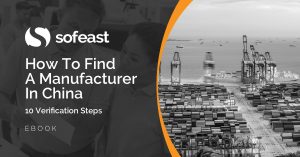This email was forwarded to me without identifiers about the supplier or the customer. I thought it was interesting for our readers.
I was told it was written by a project manager in a Western-owned trading company. The buyer was pushing for a certain level of transparency (who are the sub-suppliers, what is the cost of components, what is the cost of manufacturing, etc.), and the supplier’s response is below.
It is actually a pretty good description of usual business practices, straight from the horse’s mouth. I inserted my comments in between some of the paragraphs.
Here’s how it works. We have existing component suppliers. We sign special contracts with them, and those agreements include a clause about confidentiality. It is forbidden to disclose the manufacturing unit price. We have a long relationship with some of these suppliers, and they provide us prices they wouldn’t offer anybody else. Because of the contract, we cannot disclose prices. What we disclose to our customers is our price for the final product, and it does include a markup that corresponds to our operations.
Neat justification. And of course, this situation means the customer has no idea what the “markup to cover the cost of our operations” is and has a hard time challenging the final price.
We understand that you would like transparency. But for these volumes, other factories will tell you the same. Only buyers that purchase millions of pieces a month can require an open book policy.
I don’t agree here. It is possible to find a China-based factory that discloses much more information, whatever the volume.
One thing you can do is visit any of our factories, request information about them, check your production quality, and so on. One thing you cannot request is pricing. This is not compatible with our business model and with the contracts we have signed.
If this is true, this is already better than what most China-based trading companies offer. No issue here.
What are the implications of these business practices?
In theory, the customer can verify that the sub-suppliers know what they are doing, BUT the assumption is that the customer simply trusts the trading company on this. After all, if the trading company takes a margin for that work, why would the importer do it one more time?
We are strong proponents for having visibility throughout your supply chain in China and, when it makes sense, managing the assembly operations.
I listed before the main risks buyers taken when they let a supplier “own” and hide the sub-suppliers:
-
Risk of breakdowns (e.g. a critical sub-sub-supplier gets flooded, and no replacement can be found in less than 3 months)
-
Risk of bad PR (e.g. when a brand hears that its labels were found in the remains of a factory that collapsed, killing hundreds, even though that factory was not a direct and authorized producer)
-
Inefficiencies (e.g. excessive inventory due to lack of communication, or several suppliers purchasing the same components from the same sub-supplier separately even though aggregated demand would result in better pricing)
-
Quality issues (e.g. a component is changed without the buyer’s approval and causes failures in the users’ hands)
A good rule of thumb might be, rely on a supplier for non-strategic productions, but make sure to keep all the information in your hand for productions your company cannot afford to mess up.
Are you wondering how to find a manufacturer in China who is well-suited to your needs and can also deliver on their promises?
Sofeast has developed 10 verification steps to help you find the right manufacturer. They’re shared in this FREE eBook: “How To Find A Manufacturer In China: 10 Verification Steps.”
It covers:
- Background checks
- Manufacturing capabilities
- Quality system auditing
- Engineering resources
- Pricing, negotiation, & contracts
- …and much, much more
Just hit the button below to get your copy:


